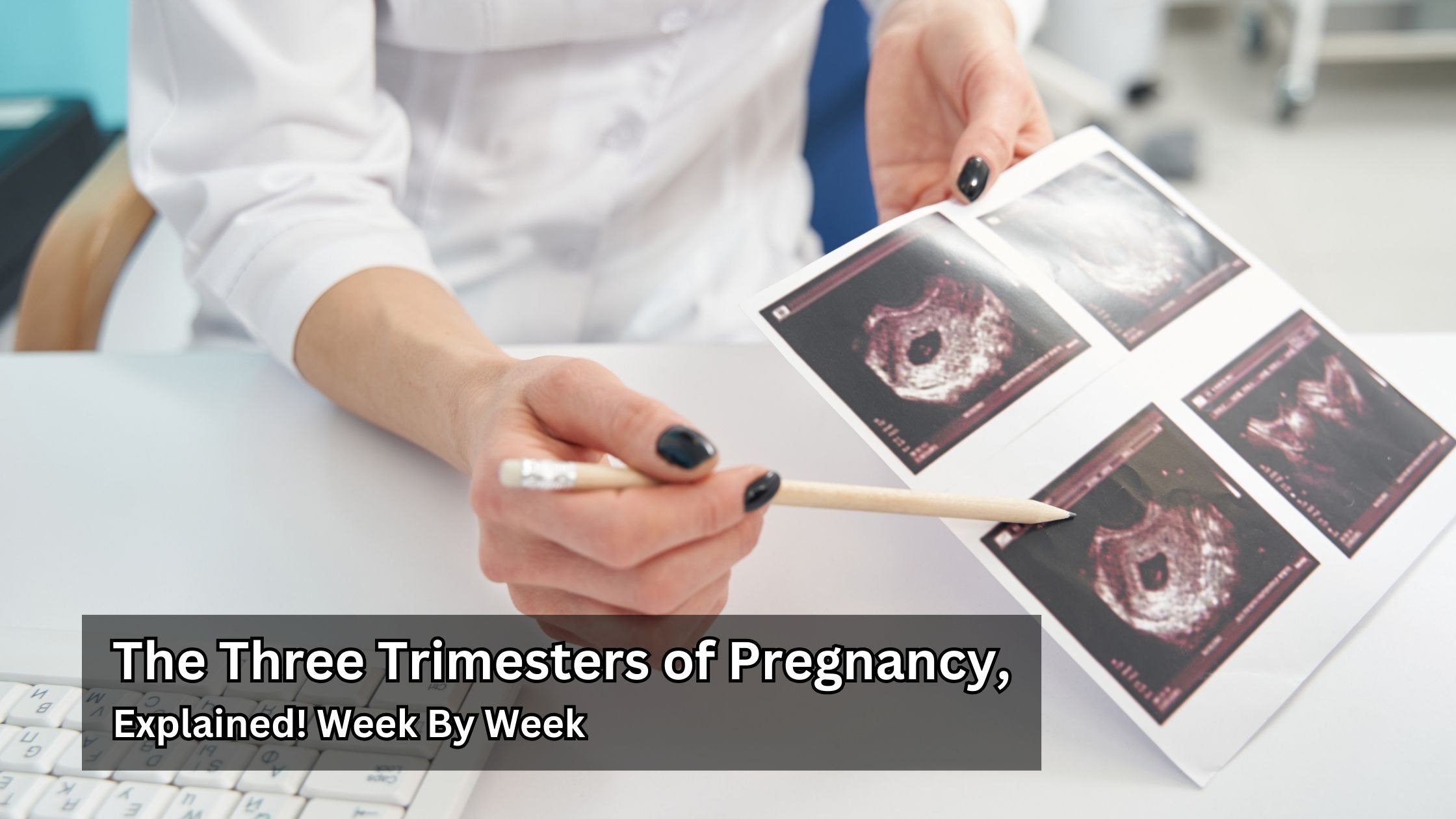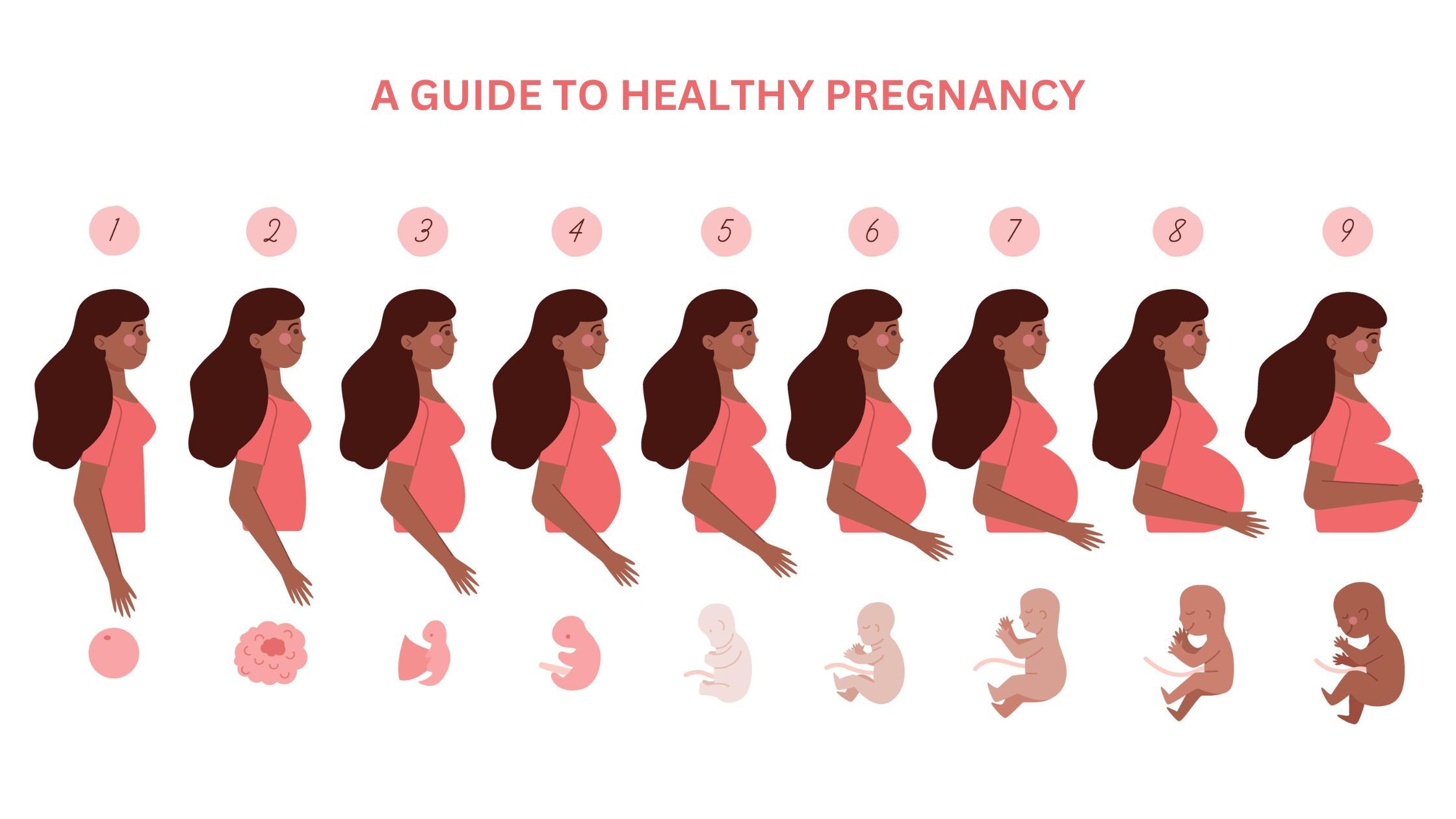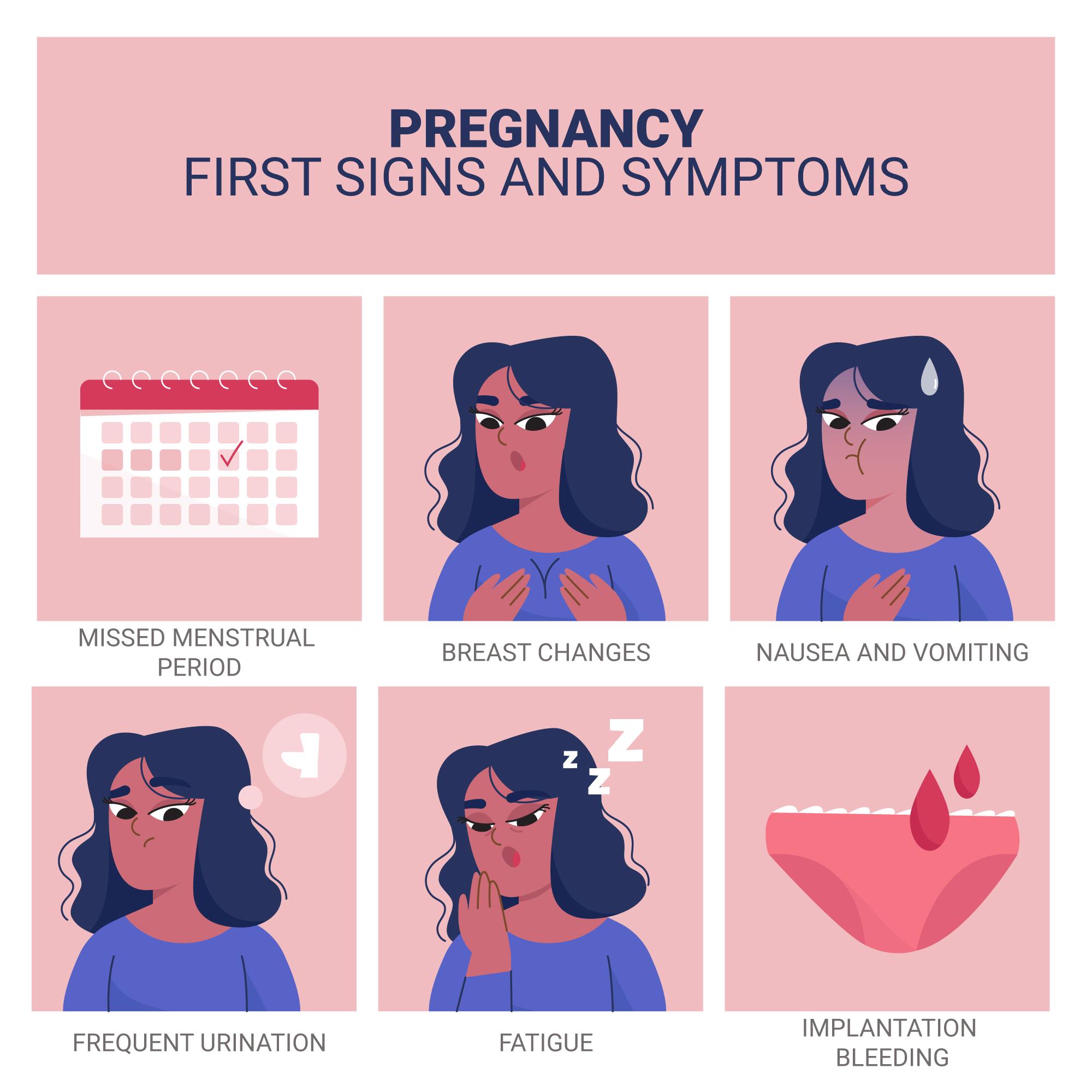Pregnancy
Are you ready on your journey to motherhood armed with our complete guide to a healthy pregnancy? Dive into practical insights and tips for a healthy pregnancy, ensuring you and your baby flourish at every stage. From maintaining a balanced diet and staying active, we’ve covered you with expert guidance on nurturing your physical and emotional well-being. Our community forums provide a supportive space to connect with other expectant parents and share experiences. Explore articles on fetal development, common pregnancy concerns, essential prenatal care, and more. Whether seeking guidance as a first-time mom or adding to your growing family, let us be your trusted companion on this extraordinary journey. Welcome the magic of pregnancy and lay the foundation for a lifetime of health and happiness for you and your little one.

Why Planning for Parenthood Is Imperative?
There is something very captivating and transformative about parenthood’s existence as it relates to life. Parenthood is a responsibility that should be well-planned. While many couples are excited by the chance of having a child, few take into consideration the importance of planning for parenthood. Being prepared provides a deck surface upon which parenting can take off smoothly, enabling a better future for both child and parents.
Financial Stability
As a baby grows, so does the financial responsibilities. From hospital bills to diapers, baby food, clothes, toys, and college bills, the expenses add up quickly. Planning for parenthood would thus make budgeting the couples’ finances easier to manage and plan for these expenses.
Setting up some sort of savings scheme, budgeting, and health insurance for the newborn are essential elements of this plan. Other parents start saving almost right away for their child’s education to lessen the burden in the future.
Emotional Readiness
Parenthood is a delightful experience, but it does come with its share of challenging situations. Lack of sleep, remaining alert constantly, and lifestyle compromises can be quite overwhelming. Both partners need to engage in talks about how prepared they are for this huge shift in their lives.
Expectations, responsibilities, and encouragement should be shared between the couple. Emotional planning for parenthood helps in creating a firm and healthy environment for a child to grow up in.
Physical Health
Both parents should be healthy before planning for parenthood. Mother’s health is vital for the unborn baby’s health. Proper nutrition, exercise, and prenatal vitamins are imperative for a healthy pregnancy.
Dads can also aid by being healthy. It benefits fertility and the healthy development of the unborn child. Consultation with a doctor for pre-pregnancy check-ups for both parents would be a wise move.
Relationship Stress
The arrival of a baby adds joy and tests the couple’s relationship. Stressful long awake nights, financial strains, and responsibilities create tension for the lacking partners. There was an emotional bond present between partners before conceiving a child.
Spending quality time together, discussing parenting styles, and understanding one another’s concerns creates a firm base for the relationship. It is a togetherness and nurturing relationship between both partners that constitutes a happy home for the baby.
Work and Life Balance
Work and parenting are a challenge for most parents. Early planning for parenthood allows couples to discuss work arrangements and parental leave. Some may decide to adjust their work hours, while others might call upon family help or childcare.
Knowing how to keep a working life in balance with bringing up a child assures that the baby receives all the love and care, whilst the parent never loses sight of his career plans.
Mental Preparation
Parenting essentially means more than just providing the basic needs of a child. Patience, understanding, and emotional resilience are necessary. Therefore, feelings of trepidation are common; however, it is said that a little mental preparation calms worries and eases changes.
Reading parenting books, enrolling in parenting classes, or seeking help from more experienced moms and dads will help. Mental preparation also reduces stress and helps parents to have fun along the way.
Creating a Loving and Secure Environment
Every child grows up with love, security, and safety. Planning for parenthood should include baby-proofing the house, organizing a nursery, and creating an atmosphere of calm.
Parents should also work on their emotional and mental well-being to nurture positive parenting. A stress-free and loving environment promotes child development.
Understanding Parenting Responsibilities
Parenting is a lifelong responsibility. It is not just putting food into mouths and clothes on backs but guiding to bring responsible individuals into society.
It is essential to know the developmental stages of the child and the means to nurture them emotionally, psychologically, and physically. Parenting is an ongoing learning process that continuously adopts new techniques; this takes time, patience, and commitment.
Social and Familial Support
Having a sound support system in place would make planning for parenthood easier. Advice from family members, attending parenting groups, and having friends who support you can help.
Family support assists new parents as they adjust to their new responsibilities, such as offering a set of helping hands. Conversations with other parents can also provide valuable information and motivation.
Parenthood can be very fulfilling but requires a plan. Imperative aspects of a child’s development are financial security, emotional readiness, a healthy relationship, and a safe environment as mentioned above.
Planning for parenthood helps alleviate anxious feelings, supports a smooth transition, and establishes a nurturing environment for one’s child. Parenthood is not only about giving birth to a sweet baby but also nurturing a happy, healthy, and highly lovable human being. Putting more thought into planning goes a long way toward ensuring the joy and fulfillment of the parenting experience.

The Three Trimesters of Pregnancy, Explained! Week By Week
For women, pregnancy is one of the most joyful moments in their lives, with changeovers transpiring, evolution, and more. But do you know? Pregnancy specifically has three phases, named trimesters of pregnancy, each lasting about three months. Here are some things you can anticipate during each trimester of pregnancy.
The First Trimester of Pregnancy
In the first trimester of pregnancy, your baby unwinds from a petite cluster of cells into a fetus. The trimester lasts from the 1st of the week until almost the 12th.
- Weeks 1–4: The fertilized egg implants itself into the lining of your uterus, and your baby starts to develop.
- Weeks 5-8: Primary organs like the heart, brain, and spinal cord begin to form. By the end of week 8, your baby is almost the size of a kidney bean.
- Weeks 9–12: Your newborn’s traits evolve more specifically. The arms, legs, fingers, and toes take shape, and the heartbeat can be witnessed.
Throughout the first trimester of pregnancy, your body undergoes significant discrepancies as it adjusts to pregnancy. Here is what you might undergo: morning sickness, tiredness, breast transformations, and frequent urination.
The Second Trimester of Pregnancy
The second trimester of pregnancy is frequently quoted as the “golden period” because many women feel most satisfactory during these weeks.
- Weeks 13–16: Your baby’s bones begin to solidify, and they can make sucking movements with their mouth.
- Weeks 17–20: You may begin to sense your infant move! This is named “quickening.”
- Weeks 21–24: Your baby’s skin is flimsy and sheer, but they’re beginning to gain weight.
- Weeks 25–26: Your baby’s sanities are evolving, and they might begin reacting to sounds.
During the second trimester of pregnancy, you may feel more nominal nausea, more fuel, baby bows, discomforts, and distress.
The Third Trimester of Pregnancy
The third trimester is all concerning development and absolute preparations. Preparations are in progress for your baby’s life outside the womb.
- Weeks 27–30: Your baby’s brain is growing at a fast pace, and they can flare and shut their eyes.
- Weeks 31–34: Your baby begins to shift head-down in preparation for birth.
- Weeks 35–37: Your baby’s lungs are almost fully formed, and they’re gaining weight fast.
- Weeks 38–40: Your baby is deemed full-term and can be born at any moment.
As you near the end of your pregnancy, your body goes through more transformations to prepare for birth, such as frequent urination, swelling, Braxton hicks contractions, discomfort, and more.
At last, always remember that the trimesters of pregnancy come with all-around challenges and excitement, so addressing them carefully is imperative.
Be safe and secure, and don’t hesitate to think of any additional help or assistance when undergoing trimesters of pregnancy. Happy Pregnancy!

A Guide to Healthy Pregnancy, Week-by-Week: What to Expect
Pregnancy is a mystical voyage loaded with suspense and excitement. As you undertake this outlandish adventure, it’s worthwhile to understand what to foresee week by week. Each phase of pregnancy brings remarkable transitions and junctures, both for you and your evolving infant. In this blog post, we’ll provide an outline of gestation week-by-week, healthy pregnancy tips, from beginning to delivery, so you can satisfactorily equip yourself for the amazing journey onwards.
Weeks 1-4: Conception and Early Development
The first few weeks of gestation frequently go overlooked, as conception generally transpires around week 2. Throughout this period, the fertilized egg implants itself in the uterus, and the cells diverge at a fast pace, composing the embryo. As one of the healthy pregnancy tips, begin taking prenatal vitamins with folic acid throughout this span to support the baby’s neural tube development.
Weeks 5-8: Organ Formation Initiates
By week 5, your infant’s heart starts to pound, and organ-building boots into lofty gear. The embryo is currently named a fetus and is about the dimensions of a pea. You may commence encountering signs like morning illness, exhaustion, and breast tenderness as your body acclimates to pregnancy hormones.
Weeks 9-12: First Trimester Milestones
Throughout weeks 9-12, your baby’s facial traits evolve more specified, and tiny fingers and toes begin to develop. This span observes the end of the first trimester, and numerous women discover solace from premature pregnancy signs about this time. Your healthcare provider may suggest a first-trimester screening to evaluate the baby’s risk of inborn conditions.
Weeks 13-16: Baby’s Movements and Gender Reveal
As you enter the second trimester, your baby’s actions evolve more apparent. You may begin feeling flutters or “quickening,” which is a thrilling juncture for numerous pregnant mothers. Around week 16, you may have an ultrasound that can display the baby’s gender if you desire to discover it.
Weeks 17-20: Growing Bump and Baby’s Senses
Your abdomen persists to extend as your baby experiences prompt growth. By week 20, your infant can listen to sounds from outside the womb, and their senses are evolving. As one of the healthy pregnancy tips, this is a wonderful time to initiate connecting with your baby by talking or singing to them.
Weeks 21-24: Milestones and Development of the Lungs of the Baby
Week 24 is deemed a striking juncture as it observes the point of viability, implying the infant could survive outside the womb with medical intervention. Your baby’s lungs are evolving rapidly during this time to prepare for breathing air after birth.
Weeks 25-28: Third Trimester Begins
As you set foot in the third trimester, your baby’s lifts and activities may intensify. You may experience Braxton Hicks compactions, which are practice contractions that help equip your body for labor. As one of the healthy pregnancy tips, it’s vital to continue attending prenatal appointments and supervising your baby’s blossoming and well-being.
Weeks 29-32: Baby’s Growth Spurt
Throughout weeks 29-32, your infant experiences a substantial growth spurt, and their body stores fat for insulation and energy. You may begin feeling more exhausted as your body works hard to support your developing baby.
Weeks 33-36: Preparation for Birth
Your baby’s head may begin to engage in your pelvis in preparation for birth, which can reduce pressure on your diaphragm but may likewise increase pressure on your bladder. As one of the healthy pregnancy tips, it’s important to stay hydrated and practice pelvic floor exercises to be ready for labor and delivery.
Weeks 37-40: Full-Term Pregnancy
By week 37, your gestation is believed full-term, and your baby is equipped for life outside the womb. Nevertheless, it’s normal for newborns to arrive anytime between 37-42 weeks. As your due date approaches, you may encounter nesting instincts and raised anticipation of meeting your infant.
Labor and Delivery: Welcome to Parenthood
When labor commences, you may undergo contractions, a break of membranes (water breaking), and other symptoms that reveal your baby is willing to be born. Every labor experience is special, but knowing what to expect can aid you feel more set.
Pregnancy is a lovely journey filled with growth, landmarks, and uncertainty. Understanding the transformations and developments week by week and healthy pregnancy tips can help you navigate this adventure with enthusiasm and excitement. Remember to take care of yourself, attend frequent prenatal appointments, and adore each moment as you prepare to welcome your little one into the world.
Your Attractive Heading

Is it Possible To Prevent Morning Sickness During Pregnancy?
Nausea, vomiting, or morning sickness during pregnancy is a frequent and often unpleasant symptom that many expectant mothers encounter in the early stages. Morning sickness can be particularly intense in pregnancies with multiples, such as twins or triplets, because of elevated hormone levels. Numerous factors, including hormones and sensitivity, are believed to contribute to the occurrence of morning sickness during pregnancy.
Raised levels of human chorionic gonadotrophin
Fluctuations in hormones, particularly the heightened levels of human chorionic gonadotropin (hCG) and estrogen have a substantial impact on the onset of morning sickness. These hormonal shifts are most prominent during the initial trimester of pregnancy, coinciding with the period when morning sickness is most prevalent.
Elevated sensitivity to odors
Pregnancy can increase an individual’s sensitivity to smells, causing certain odors that were once bearable or even enjoyable to become nauseating. This heightened sensitivity can be a contributing factor to the experience of nausea and vomiting during pregnancy.
Gastrointestinal changes
During pregnancy, alterations in the gastrointestinal tract can occur, such as delayed gastric emptying and relaxation of the lower esophageal sphincter. These changes may lead to acid reflux and the regurgitation of stomach contents, which can be factors contributing to the sensation of nausea or morning sickness during pregnancy and episodes of vomiting.
Hyperemesis gravidarum
Although morning sickness during pregnancy is typically considered a common aspect, there are instances of severe and persistent nausea and vomiting, a condition known as hyperemesis gravidarum. This condition is more severe and can result in dehydration, electrolyte imbalances, and weight loss. If a pregnant individual is experiencing excessive vomiting throughout the day, has difficulty tolerating any food or liquids, exhibits insufficient urine output or discolored urine, feels severely weak, experiences dizziness, or vomits blood, it is indicative of hyperemesis gravidarum. In such cases, pregnant individuals must seek medical attention for appropriate management and treatment.
Here are a few remedies that can alleviate morning sickness condition:
Nausea or morning sickness during pregnancy is a widespread occurrence, affecting the majority of expectant mothers. While it’s commonly referred to as “morning sickness,” it can actually strike at any time of day. Typically, it sets in around the 12-14 week mark of pregnancy, but for certain individuals, it may persist for several more weeks or even throughout the entire pregnancy. To alleviate these symptoms, here are some recommended remedies that involve adjustments to your diet and lifestyle:
- Ensure you get ample rest because fatigue and tiredness can exacerbate nausea and vomiting.
- Steer clear of spicy, greasy, and overly sweet foods.
- Opt for frequent, small meals that are carbohydrate-rich, such as rice, toast, crackers, potatoes, and bananas.
- Stay well-hydrated, but take sips of fluids rather than consuming large quantities, especially during meals.
- Identify and avoid any scents or sounds that trigger your nausea.
- Consider using ginger, which is known for its beneficial effects, particularly when consumed with food or in the form of ginger candies.
- Opt for comfortable clothing and maintain well-ventilated rooms to enhance your comfort.
- Engage in activities to distract yourself and seek support from your family when needed.
In conclusion, while it may not always be feasible to fully prevent nausea and morning sickness during pregnancy, there are undoubtedly measures expectant mothers can take to alleviate the symptoms and make this period more comfortable. Simple transformations in diet and lifestyle, such as consuming smaller, more frequent meals, avoiding trigger foods, and staying well-hydrated, can go a long way in managing these symptoms.

How to Stop Leaky Breasts
Life is a ravishing journey filled with many incredible milestones, and one of the most magical experiences is becoming a mother. However, this journey can also bring unexpected challenges, and one of them is dealing with leaky breasts. While it may not be a topic commonly discussed in everyday conversation, it’s a very real and common occurrence for many new moms. In this blog, we’ll delve into what causes leaky breasts and provide practical tips on how to manage and cope with this natural phenomenon.
Understanding the Why
Before we jump into solutions, let’s explore why leaky breasts happen in the first place. Leaky breasts are a natural part of the postpartum journey, primarily due to hormonal fluctuations. When you’re pregnant, your body starts preparing for breastfeeding by increasing the production of prolactin, the hormone responsible for milk production. However, it’s not until after childbirth that milk production fully kicks in, and that’s when leaky breasts often make their debut.
Invest in Nursing Pads
One of the first things you’ll want to do to manage leaky boobs is to invest in nursing pads. These handy little pads are designed to fit inside your bra and absorb any leaked breast milk, keeping your clothing dry and comfortable. They come in disposable and reusable options, allowing you to choose what works best for you and the environment.
Wear a Supportive Bra
Wearing a comfortable and supportive bra is crucial for managing leaky breasts. Look for bras designed specifically for nursing mothers. They often have convenient features like easy-to-open clasps for breastfeeding and extra padding to help conceal any leakage. A well-fitting bra can also help alleviate some of the discomfort that can come with engorged breasts.
Practice Good Breast Hygiene
Maintaining good breast hygiene is essential when dealing with leaky breasts. Ensure that you clean your breasts daily with warm water and mild soap, and gently pat them dry. Avoid using harsh chemicals or fragrances near your breasts, as these can irritate your skin.
Nursing on Demand
Frequent breastfeeding or pumping can help alleviate breast fullness and reduce leakage. Nursing your baby on demand helps regulate your milk supply and can be a natural way to reduce the chances of leakage.
Engage in Breastfeeding Techniques
Learning proper breastfeeding techniques can also help you manage leaky breasts. Consider reaching out to a lactation consultant for guidance on ensuring a proper latch, which can reduce the chances of milk leakage during feeds.
Stay Hydrated and Maintain a Healthy Diet
Your body requires extra hydration and nutrients while breastfeeding, so it’s essential to stay well-hydrated and maintain a balanced diet. A well-nourished body is better equipped to handle the demands of milk production.
Express Excess Milk
If you find that you have an oversupply of milk and are experiencing significant leakage, consider expressing excess milk between feedings using a breast pump. This not only helps manage the issue but also allows you to build a milk stash for later use.
Leaky breasts are a natural and temporary part of the breastfeeding journey for many new moms. While they can be surprising and even a bit inconvenient at times, there are practical steps you can take to manage and cope with them. Remember that this phase will pass as your body adjusts to the demands of breastfeeding, and in the meantime, take comfort in the beautiful bond you’re creating with your little one through this incredible journey of motherhood.

How to Fight Pregnancy Fatigue Naturally
As you go through pregnancy, it becomes more important to learn how to fight pregnancy fatigue naturally. As your body undergoes incredible changes to nurture and grow your baby, it’s natural to feel tired at times. However, there are plenty of natural ways to fight pregnancy fatigue and boost your energy levels. In this blog, we’ll explore some effective tips to help expecting moms feel more refreshed and energized during this exciting time in their lives.
Prioritize Sleep
Getting enough rest is crucial during pregnancy. Hormonal changes, discomfort, and the need for more frequent trips to the bathroom can disrupt your sleep. To combat this, create a soothing bedtime routine. Try using pillows for support, sleep on your left side to improve blood flow to your baby, and keep your room dark and quiet.
Stay Hydrated
Dehydration can contribute to fatigue, so make sure you’re drinking enough water when trying to fight pregnancy fatigue naturally. Carry a reusable water bottle with you throughout the day, and consider infusing your water with slices of lemon or cucumber for a refreshing twist.
Balanced Nutrition
Eating a well-balanced diet can go a long way in combating pregnancy fatigue. Focus on whole foods, lean proteins, fruits, vegetables, and whole grains. These foods provide essential nutrients and steady energy throughout the day. Avoid sugary snacks, which can lead to energy crashes.
Frequent, Small Meals
Instead of three large meals, opt for smaller, more frequent meals and snacks when trying to fight pregnancy fatigue naturally. This can help stabilize your blood sugar levels and keep your energy levels consistent. Include healthy snacks like nuts, yogurt, or fruit to curb hunger and maintain energy.
Exercise Regularly
While it may seem counterintuitive, light to moderate exercise can actually boost your energy levels during pregnancy. Activities like prenatal yoga, swimming, or walking can improve circulation and help you feel more invigorated. Always consult with your healthcare provider before starting a new exercise routine.
Listen to Your Body
Pregnancy is not the time to push yourself to the limit when trying to fight pregnancy fatigue naturally. If you’re feeling exceptionally tired, allow yourself to rest. Even a short nap or a few moments of relaxation can recharge your batteries.
Stress Reduction Techniques
Stress can exacerbate fatigue, so it’s important to find ways to manage it. Meditation, deep breathing exercises, and prenatal massage can help alleviate stress and promote relaxation.
Iron-Rich Foods
Iron deficiency can contribute to pregnancy fatigue, so include iron-rich foods in your diet when trying to fight pregnancy fatigue naturally. Leafy greens, lean meats, and fortified cereals can help boost your iron levels.
Stay Connected
Share your feelings and experiences with your partner, friends, and family. Emotional support can be a powerful energy booster during pregnancy.
Prenatal Vitamins
Consult with your healthcare provider to ensure you’re taking the appropriate prenatal vitamins. These supplements can fill in nutritional gaps and help combat fatigue.
Pregnancy fatigue is a common and expected part of the journey, but it doesn’t have to dominate your experience. By prioritizing rest, nourishing your body with the right foods, staying active, and managing stress, you can fight pregnancy fatigue naturally and enjoy this remarkable time in your life to the fullest. Remember, every pregnancy is unique, so it’s essential to listen to your body and seek guidance from your healthcare provider when needed. Embrace this beautiful journey, and take care of yourself along the way.

Breast Milk Jaundice: What You Need to Know
Breastfeeding is often celebrated as one of the most natural and healthiest ways to nourish your baby. However, sometimes, new parents encounter unexpected challenges along the way. One such challenge is breast milk jaundice, a condition that can cause concern and anxiety. In this blog, we’ll delve into what milk-type jaundice is, how it differs from other types of jaundice, and what you can do if your baby is affected.
Understanding Jaundice
Jaundice is a common condition in newborns, occurring in about 60% of full-term and 80% of preterm babies. It is characterized by the yellowing of a baby’s skin and the whites of its eyes. Jaundice results from an excess of bilirubin, a yellow pigment formed during the breakdown of red blood cells. The liver typically processes and removes bilirubin from the body. However, in newborns, the liver might not be fully developed, leading to temporary jaundice.
Breast Milk Jaundice vs. Physiological Jaundice
Breast milk jaundice is a specific type of jaundice that differs from the more common physiological jaundice. While physiological jaundice usually appears within the first few days of life and resolves on its own within the first two weeks, milk jaundice can persist for several weeks or even months.
The exact cause of jaundice is not fully understood, but it is believed to be related to substances in breast milk that inhibit the liver’s ability to process bilirubin efficiently. Unlike physiological jaundice, milk jaundice often presents after the first week of life.
Symptoms of Breast Milk Jaundice
Breast milk jaundice shares similar symptoms with physiological jaundice, including:
- Yellowing of the skin and whites of the eyes
- Poor feeding
- Dark urine and pale stools
- Lethargy
Diagnosing
If you suspect that your baby has jaundice, it’s essential to consult your pediatrician. They will evaluate your baby’s condition and may perform blood tests to measure bilirubin levels. It’s crucial to distinguish breast milk jaundice from other forms of jaundice, such as hemolytic jaundice or biliary atresia, which require different treatments.
Managing Breast Milk Jaundice
The good news is that this type of jaundice is usually benign and doesn’t cause any long-term harm to your baby. Most cases resolve on their own within a few weeks to a few months. Here are some tips for managing jaundice:
Continue breastfeeding: Breastfeeding should be continued as it provides essential nutrients and hydration for your baby. Jaundice is not a reason to stop breastfeeding.
Ensure proper feeding: Make sure your baby is feeding well and frequently, as frequent nursing helps eliminate bilirubin from the body.
Monitor bilirubin levels: Your pediatrician may recommend monitoring your baby’s bilirubin levels through blood tests to ensure they are within safe limits.
Phototherapy: In severe cases of jaundice, phototherapy (exposure to special lights) may be recommended to help break down bilirubin in the baby’s skin.
Breast milk jaundice can be a source of worry for new parents, but it is generally a temporary and harmless condition. By understanding the differences between milk jaundice and physiological jaundice and seeking guidance from your pediatrician, you can ensure that your baby receives the appropriate care and support. Remember that breastfeeding is still the best choice for your baby’s overall health, and milk-type jaundice is usually a minor bump on the road to a happy, healthy infancy.

Is a Molar Pregnancy a Medical Condition?
When it comes to pregnancy, most people eagerly anticipate the arrival of a healthy baby. However, not all pregnancies follow the typical course. Sometimes, a pregnancy can take a distressing turn, leading to a condition known as a molar pregnancy. This unusual occurrence can be a challenging experience for women and their families. In this blog, we’ll delve into what exactly a molar pregnancy is, its types, causes, symptoms, and treatment options, shedding light on this often misunderstood medical condition.
Understanding Molar Pregnancy
A molar pregnancy, also known as hydatidiform mole, is a rare complication of pregnancy where abnormal tissue forms in the uterus instead of a normal embryo. This abnormal tissue can take two primary forms: complete mole and partial mole.
Complete Mole: In this type, no normal fetal tissue develops. Instead, a mass of abnormal cells grows in the uterus. These cells typically contain no identifiable embryo or fetus.
Partial Mole: In a partial mole, an abnormal embryo starts to develop but cannot survive. The embryo has too many chromosomes, which is typically due to an extra set of paternal chromosomes.
Causes of Molar Pregnancy
The exact cause of molar pregnancies is not always clear, but several factors may contribute to their occurrence:
Abnormal Fertilization: Most molar pregnancies result from abnormal fertilization, where an egg with no nucleus is fertilized by a single sperm that then duplicates itself.
Age: Women under 20 or over 35 are at a higher risk of molar pregnancies.
Previous Molar Pregnancy: If you’ve had a molar pregnancy before, your risk of having another one increases.
Signs and Symptoms
Molar pregnancies can exhibit various signs and symptoms, some of which can be mistaken for typical pregnancy signs. Common symptoms include:
- Vaginal bleeding, often brown or bright red.
- Severe nausea and vomiting, often referred to as hyperemesis gravidarum.
- Enlarged uterus that doesn’t correspond to the gestational age.
- High blood pressure (gestational hypertension).
- Excessive swelling of the abdomen.
- Passage of grape-like clusters or tissue through the vagina.
It’s important to note that not all molar pregnancies cause noticeable symptoms, making regular prenatal care and ultrasounds crucial for early detection.
Diagnosis and Treatment
If your doctor suspects a molar pregnancy, they will conduct several tests, including ultrasounds and blood tests. An ultrasound can reveal the presence of abnormal tissue in the uterus. Elevated levels of human chorionic gonadotropin (hCG), a hormone produced during pregnancy, are also significant indicators.
Treatment for a molar pregnancy typically involves the removal of the abnormal tissue through a procedure called dilation and curettage (D&C). After the procedure, close monitoring of hCG levels is necessary to ensure they return to normal. In some cases, follow-up treatment may be required if the mole is found to be cancerous.
Emotional Impact
Experiencing a molar pregnancy can be emotionally distressing. It’s essential to seek support from healthcare professionals and support groups during this challenging time. Talking openly with your healthcare provider and your loved ones can help you navigate the emotional aspects of this condition.
In conclusion, a molar pregnancy is indeed a medical condition, and it can be a perplexing and emotionally challenging experience for those who go through it. Understanding the causes, symptoms, and treatment options can help women and their families navigate this rare complication. Remember that early detection and prompt medical intervention are crucial for a successful outcome, and seeking emotional support is just as important as addressing the physical aspects of the condition.

Getting Pregnant with One Ovary; Taking It Step By Step
In the majority of women possessing only one ovary, ovulation occurs as per usual. These women typically do not encounter any hindrances in achieving pregnancy. However, a subset of women might experience fertility challenges due to less frequent ovulation. If a woman with a single ovary, desiring to become pregnant, harbors uncertainties about her situation, it is advisable for her to engage in a conversation with a medical professional. To enhance the likelihood of conception (Getting Pregnant with One Ovary), the following steps can be pursued.
Step 1
Initiating by consulting your physician marks the initial phase. Your healthcare provider might recommend an ultrasound to evaluate the functionality of the solitary ovary. Through this ultrasound, the doctor will ascertain whether the ovary is releasing eggs at the appropriate time. Additional examinations will also be conducted to ensure the absence of any potential complexities that could potentially affect fertility.
Step 2
During your endeavors to conceive (Getting Pregnant with One Ovary), it’s beneficial to have a calendar readily available. Use it to note down your ovulation days. Typically, ovulation occurs between the 11th and 21st days of your menstrual cycle, commencing from the first day of your previous menstrual period.
Step 3
Pay attention to indications of ovulation. You’ll notice a shift in your cervical mucus consistency. Additionally, there might be a rise in your basal body temperature during ovulation. Therefore, it’s important not to overlook these signs.
Step 4
Sperm can maintain viability within a woman’s body for several days, whereas eggs have a survival period of less than 24 hours following ovulation. Therefore, engaging in sexual intercourse during your ovulation window or even before it can enhance the prospects of achieving pregnancy (Getting Pregnant with One Ovary).
Step 5
Indeed, the anticipation of observing those telltale blue lines on a pregnancy test can be a challenge, but exercising patience a bit longer is advisable. Perform pregnancy tests approximately two weeks after ovulation. In the event of a negative outcome, consider revisiting the procedure in the following menstrual cycle. While it might encompass several months of attempts to successfully conceive, it’s crucial not to lose heart and persist in your efforts. However, if the span of 6 to 12 months passes without achieving pregnancy, it’s recommended to consult your doctor once more.
Should you encounter irregular ovulation, your healthcare provider might prescribe fertility medications. It’s crucial to adhere to their recommended schedule for these medications when getting pregnant with one ovary. In situations like these, considering assisted reproductive technology is also an option.
If your attempts at conceiving have persisted for over six months without fruition, it’s advisable to consult your OBGYN or a fertility specialist regarding potential interventions. Your physician might propose fertility treatments as a viable path forward. The encouraging aspect is that these treatments hold the promise of achieving pregnancy. Therefore, it’s essential to maintain optimism and continue your efforts.

Why Is It Important To Get Influenza Vaccination During Pregnancy?
The journey of pregnancy is a remarkable chapter in a woman’s life, filled with moments of anticipation, joy, and careful decision-making. One of the vital decisions an expectant mother faces is whether to get vaccinated against influenza during pregnancy. Influenza, commonly known as the flu, can pose significant risks to both the mother and the unborn child. In this article, we delve into the importance of getting an influenza vaccination during pregnancy, exploring the benefits it offers to the health and well-being of both mother and baby.
Understanding Influenza Vaccination During Pregnancy
Influenza is not just a common cold; it’s a contagious respiratory illness caused by the influenza virus. During pregnancy, a woman’s immune system experiences changes to support the growing fetus, making her more susceptible to infections like the flu. Moreover, the changes in the body’s cardiovascular and respiratory systems during pregnancy can lead to more severe illness when influenza strikes.
Protecting the Mother
Getting influenza vaccination during pregnancy not only shields the mother from the potentially severe symptoms of the flu but also reduces the risk of complications. Pregnant women are at a higher risk of developing complications from influenza, such as pneumonia, which can lead to hospitalization and even death in severe cases. By receiving the influenza vaccine, expectant mothers can significantly lower the risk of such complications, ensuring their own well-being and that of their developing baby.
Guarding the Unborn Child
The protective benefits of influenza vaccination extend beyond the mother’s health. When a pregnant woman receives the flu vaccine, she passes on the protective antibodies to her baby through the placenta. This passive immunity helps safeguard the newborn during the first few months of life when they are too young to receive their own flu shots. This is particularly crucial because infants are at a heightened risk of severe flu-related complications.
Safety of Influenza Vaccination During Pregnancy
It’s natural for expectant mothers to be concerned about the safety of any medical intervention during pregnancy. However, extensive research and studies have shown that the influenza vaccine is safe for both the mother and the developing baby. The vaccine does not contain live viruses and cannot cause the flu. Instead, it prompts the body to produce antibodies that provide protection.
Timing Matters
Healthcare professionals recommend getting the influenza vaccination during pregnancy, preferably during the flu season. The ideal time for vaccination is during the second or third trimester. This timing ensures that the mother has the highest level of protective antibodies during the critical period when the baby’s immunity is still developing.
In a journey marked by countless decisions, the choice to receive an influenza vaccination during pregnancy stands as a pivotal one. It’s a choice that embraces the well-being of both the expectant mother and her unborn child. By protecting herself against potential complications, an expectant mother also extends her protection to her baby, setting the foundation for a healthier start in life. With a wealth of scientific evidence attesting to its safety and effectiveness, the influenza vaccine during pregnancy emerges not just as a shield against a contagious virus, but as a beacon of care and responsibility.
As we navigate the realms of pregnancy, let us remember that the power to safeguard our health and the health of our children often rests within the choices we make. In choosing to receive the influenza vaccine, we choose health, resilience, and a future brimming with promise.

How Effective Are Bleach Pregnancy Tests?
Whether you’re attempting to conceive or fervently wishing for a different outcome, the duration between ovulation and the anticipated arrival of your period can give rise to an interminable sensation. This might explain why, instead of making a trip to the store to purchase a pregnancy test, specific individuals scour beneath their kitchen sink for a typical household component that has been purported to offer insights into pregnancy – the bleach pregnancy tests.
Though this technique has gained popularity through various online platforms, it would be prudent to exercise caution and reconsider before attempting or placing trust in the results of a bleach pregnancy test. Improper usage of bleach can lead to skin or ocular irritation, irrespective of your pregnancy status. Additionally, professionals cast doubts on the dependability of do-it-yourself tests such as the bleach pregnancy test. Before embarking on the path of conducting a bleach pregnancy test, take the time to peruse the subsequent information to grasp its associated hazards and constraints.
Bleach Pregnancy Tests: What Are They?
The allure of bleach pregnancy tests lies in their simplicity and affordability. Generally, people just need to combine a small amount of bleach with a cup of their own urine and then observe whether the mixture generates any foam. Supposedly, if the urine produces significant foaming—akin to the frothiness of a mug of beer—it’s believed to indicate a reaction between the bleach and human chorionic gonadotropin (hCG). This hormone experiences a surge during the initial trimester of pregnancy and becomes detectable shortly after the implantation of a fertilized egg. However, commercially available urine pregnancy tests are also tailored to identify hCG, albeit with a notably higher level of precision.
Bleach Test for Pregnancy: Do They Work?
In addition to attempting bleach pregnancy tests, a variety of other homemade pregnancy testing methods are also embraced by individuals. Going back to ancient times, the Egyptians showcased their ingenuity by urinating on wheat and barley seeds, and if these seeds sprouted, it was interpreted as an indicator of pregnancy. In the modern era, people experiment with do-it-yourself techniques involving substances like salt, sugar, vinegar, toothpaste, and even dandelion leaves.
Although the internet is replete with assertions about the reliability of bleach pregnancy tests, experts remain unconvinced. The professionals at Planned Parenthood Federation of America point out that there exists no scientific evidence supporting the safety or effectiveness of bleach or any other homemade pregnancy tests.
The sole definitive method of ascertaining pregnancy is by undergoing a standard pregnancy test. These tests yield a high degree of accuracy when executed correctly. When the provided instructions are adhered to, at-home test kits available over-the-counter are approximately 97% to 99% accurate. Should you opt to explore a bleach pregnancy test or any other unconventional method, it is strongly recommended to verify the results through a conventional urine or blood test.

Pregnancy Cravings: What You Need to Know
The journey of pregnancy brings a multitude of changes to a woman’s body, both physically and emotionally. One of the most talked-about aspects is pregnancy cravings. Those sudden, intense desires for specific foods can be amusing, confusing, and sometimes even frustrating. But fear not, because in this blog, we’re diving deep into the world of pregnancy cravings to understand what they are, why they happen, and how to navigate them.
Understanding Pregnancy Cravings
Pregnancy cravings are no myth – they’re a real phenomenon experienced by a majority of pregnant women. These cravings are typically intense desires for certain foods, which might not have been your favorites before pregnancy. Think pickles and ice cream, or peanut butter and broccoli sandwiches – the combinations can get quite creative!
Why Do They Happen?
The exact cause of pregnancy cravings isn’t entirely clear, but there are several theories. Hormonal fluctuations during pregnancy can play a significant role. Hormones like estrogen and progesterone can influence your sense of taste and smell, making certain foods more appealing than usual. Additionally, the body might be signaling a need for specific nutrients. For example, a craving for citrus fruits might indicate a need for more vitamin C.
Dealing with Pregnancy Cravings
Moderation: While it’s perfectly okay to indulge in your cravings occasionally, it’s important to remember moderation. Eating a balanced diet ensures you and your baby get the necessary nutrients.
Healthy Alternatives: If you’re craving something unhealthy, try to find a healthier alternative. If you’re craving sweets, opt for fruits. If it’s salty snacks you’re after, grab a handful of nuts.
Stay Hydrated: Sometimes, your body can confuse thirst with hunger. Make sure you’re drinking enough water throughout the day.
Mindful Eating: Before giving in to a craving, pause and consider whether you’re genuinely hungry. Engage in mindful eating to prevent overindulgence.
Consult Your Doctor: If you’re experiencing intense cravings for non-food items like chalk or dirt (a condition known as pica), it’s crucial to consult your doctor, as this could indicate a nutrient deficiency or other underlying issues.
Partner Involvement
Pregnancy cravings can be an excellent opportunity for partners to bond with the expectant mother. Accompanying her on late-night snack runs or surprising her with a favorite treat can be incredibly supportive and create lasting memories.
Embracing the Experience
Pregnancy is a unique time in a woman’s life, and cravings are just one small part of this incredible journey. Embrace the experience, enjoy the quirks, and remember that it’s all a part of the story you’ll share with your child someday.
Pregnancy cravings might seem strange, but they’re a normal and fascinating aspect of pregnancy. As your body goes through this incredible transformation, don’t be surprised if you suddenly find yourself longing for foods you’ve never even considered before. Embrace the cravings, listen to your body, and remember that moderation and healthy choices are key. This is your journey, and every craving is a part of the story you’re creating – a story filled with love, anticipation, and a touch of culinary adventure.

The 10 Most Early Signs of Pregnancy
While the journey of pregnancy is different for every woman, some common early signs can indicate the wonderful news that a new life is beginning to grow within. Whether you’re eagerly trying to conceive or just curious about the early signs of pregnancy, this blog post will provide you with insights into the ten most common early indicators.
Missed Period: The Classic Clue
One of the most recognized and early signs of pregnancy is a missed period. If your menstrual cycle is regular and you suddenly find it delayed, it might be time to consider taking a pregnancy test. However, it’s important to note that other factors, such as stress or changes in lifestyle, can also affect your menstrual cycle.
Tender Breasts: Hormonal Changes at Play
Hormones play a pivotal role in pregnancy, and as soon as conception occurs, hormonal changes start taking place. One of the earliest signs is breast tenderness or sensitivity. Your breasts might feel fuller, heavier, or more sensitive than usual due to the increased levels of hormones like estrogen and progesterone.
Fatigue: Your Body Working Overtime
If you find yourself feeling more tired than usual even without any significant change in your routine, it could be an early sign of pregnancy. Your body is working hard to support the growth of the embryo, leading to increased fatigue.
Nausea and Morning Sickness: Not Just Mornings
Nausea and vomiting, often referred to as morning sickness, can be experienced at any time of the day. These symptoms usually start around the sixth week of pregnancy due to hormonal changes and increased sensitivity to certain smells and tastes
Changes in Food Aversions and Cravings: Unpredictable Palate
Pregnancy can lead to sudden and sometimes bizarre changes in your food preferences. You might find yourself craving foods you never enjoyed before or feeling averse to foods you once loved.
Frequent Urination: Blame It on Hormones
An increased need to use the restroom, even during the night, can be a result of hormonal changes. As your body starts producing more blood, your kidneys work harder to filter waste, leading to more frequent urination.
Mood Swings: Roller Coaster of Emotions
The hormonal roller coaster isn’t limited to physical symptoms. Mood swings and emotional changes are also common during early pregnancy. Don’t be surprised if you find yourself laughing one moment and teary-eyed the next.
Bloating and Gas: Blame It on Progesterone
Hormonal changes can also slow down your digestive system, leading to increased bloating and gas. This discomfort is a result of the hormone progesterone, which relaxes muscles in the body.
Heightened Sense of Smell: The Sniff Test
If you suddenly find yourself detecting scents you never noticed before, you might be pregnant. Heightened olfactory sensitivity is another one of the common early signs of pregnancy.
Light Spotting: Implantation Bleeding
In some cases, a phenomenon called implantation bleeding may occur when the fertilized egg attaches itself to the lining of the uterus. This can result in light spotting or bleeding, often mistaken for a light period.
While these early signs of pregnancy can provide clues, it’s important to remember that every woman’s experience is unique. Some women might experience all of these signs, while others might only notice a few. If you suspect you might be pregnant, taking a home pregnancy test or consulting a healthcare professional is the best way to confirm your pregnancy.

What To Do If You Suffer From Insomnia During Pregnancy
Insomnia, the inability to fall asleep or stay asleep, can be especially frustrating when facing insomnia during pregnancy. Hormonal fluctuations, physical discomfort, anxiety, and the sheer excitement of impending motherhood can all contribute to sleep disturbances. As your body adjusts to the demands of growing a tiny human, it’s essential to prioritize sleep for both your well-being and the health of your baby.
Tips to Combat Insomnia During Pregnancy
Establish a Relaxing Bedtime Routine
Engage in calming activities before bedtime to signal to your body that it’s time to wind down. This could include reading a book, taking a warm bath, practicing gentle prenatal yoga, or listening to soothing music.
Create a Comfortable Sleep Environment
Invest in supportive pillows that can help alleviate pregnancy-related discomfort, such as back pain or pressure on your hips. Keep the bedroom cool, dark, and quiet to promote a conducive sleeping environment.
Monitor Your Diet
Be mindful of what you eat and drink, especially in the evening. Avoid caffeine and spicy, heavy, or acidic foods close to bedtime. Opt for a light, nutritious snack if you’re hungry before sleep.
Stay Active
Regular, gentle exercise during the day can help improve sleep quality. Consult your healthcare provider for suitable prenatal exercises that can alleviate tension and promote relaxation.
Practice Mindfulness and Meditation
Insomnia during pregnancy can bring about a whirlwind of emotions and thoughts. Mindfulness techniques, deep breathing exercises, and guided meditation can help calm your mind and prepare it for restful sleep.
Limit Screen Time
The blue light emitted by phones, tablets, and computers can interfere with your body’s natural sleep-wake cycle. Power down devices at least an hour before bedtime.
Stay Hydrated, But Not Before Bed
While staying hydrated is crucial, try to minimize fluid intake in the hours leading up to bedtime to reduce the likelihood of nighttime bathroom trips.
Establish a Consistent Sleep Schedule
Train your body to recognize when it’s time to sleep by going to bed and waking up at the same time each day. Consistency can help regulate your body’s internal clock.
Talk to Your Healthcare Provider
If insomnia persists and starts affecting your daily life, discuss your sleep concerns with your healthcare provider. They can provide tailored advice and ensure no underlying medical issues are contributing to your sleep disturbances.
As you embark on the incredible journey of pregnancy, managing insomnia becomes an important part of caring for yourself and your baby. Remember that you’re not alone in facing these challenges, and there are various strategies you can employ to promote better sleep. By prioritizing relaxation, creating a comfortable sleep environment, and seeking guidance when needed, you can navigate insomnia during pregnancy with greater ease and look forward to the restful nights that you deserve.

What You Need To Know About Amniocentesis?
Amniocentesis, usually referred to simply as “amnio,” is a prenatal diagnostic procedure used to compile valuable data about a developing fetus. It entangles the extraction of a small sample of amniotic fluid that encompasses the infant in the uterus. This fluid contains cells shed by the baby that can provide insight into genetic, chromosomal, and developmental conditions.
Why Is Amniocentesis Done?
Amniocentesis is typically recommended for diverse reasons, including refined maternal age (35 and older), a clan history of hereditary disorders, abnormal outcomes from other prenatal tests, or concerns detected during regular ultrasound tests. The procedure can determine chromosomal aberrations like Down syndrome, hereditary disorders, for instance, cystic fibrosis, and neural tube defects like spina bifida.
The Procedure
Amniocentesis is frequently performed between the 15th and 20th weeks of pregnancy. The procedure involves the subsequent steps:
- Preparation: The physician utilizes ultrasound to discover the baby’s position and a fortunate pocket of amniotic fluid.
- Sterilization: The mom’s abdomen is cleansed and sterilized.
- Local Anesthesia: A provincial anesthetic might be administered to dampen the area.
- Fluid Extraction: Utilizing a thin needle, the physician gently removes a small amount of amniotic fluid from the amniotic sac.
- Monitoring: The infant’s heart rate and the mum’s vital signs are monitored throughout the procedure.
- Aftercare: After the procedure, the mum might be suggested to take it easy for the rest of the day, bypassing strenuous activities.
Benefits of Amniocentesis
- Accurate Diagnosis: It provides highly accurate information about genetic and chromosomal conditions.
- Informed Decision-Making: Results help parents make informed choices about the pregnancy, allowing time for preparation and planning if a health concern is detected.
- Early Intervention: If a condition is identified, early interventions and medical management can be initiated to improve outcomes.
Risks and Considerations
While amniocentesis is a helpful diagnostic tool, it’s vital to be conscious of potential threats, including:
- Miscarriage Risk: There’s a slight risk of miscarriage linked with the procedure, usually around 1 in 300 to 1 in 500 cases.
- Infection: There’s a tiny risk of infection, but measures are taken to minimize this risk.
- Discomfort: Some females might encounter mild discomfort or cramping during or after the procedure.
- Emotional Impact: Waiting for outcomes can be emotionally hard for expecting parents.
Amniocentesis plays a crucial role in modern prenatal care by offering accurate insights into the health of a developing fetus. While the decision to experience the procedure can be complicated and emotionally charged, it empowers parents with practical data that can shape their gestation journey. Conferring with healthcare experts and discussing the advantages, risks, and individual considerations will aid in making a knowledgeable pick that aligns with the well-being of both the mom and the newborn.

How Soon Does a Pregnancy Start to Show?
Pregnancy is a remarkable and transformative journey that brings both excitement and wonder. As a woman’s body undergoes a series of incredible changes to accommodate the growth of a new life, a question of when pregnancy start to show becomes a topic of curiosity and anticipation. Each woman’s experience is unique, and while there’s no definitive answer, there are common trends and factors that shed light on this beautiful process.
An Early Stage Miracle
In the early stages of pregnancy, the changes taking place within a woman’s body are mostly hidden from the world’s view. While the fertilized egg implants itself into the uterine lining, hormonal shifts are occurring, setting the stage for the months ahead. However, during the first trimester, the visible signs of pregnancy start tend to be subtle and are often attributed to other causes.
Changes in the First Trimester
During the first trimester, the body is working tirelessly to create a nurturing environment for the growing embryo. Hormones like progesterone and estrogen surge, leading to various symptoms such as fatigue, morning sickness, and breast tenderness. But when does the baby bump start to appear?
For most women, any noticeable physical changes usually occur towards the end of the first trimester or the beginning of the second. These changes can be quite individualized and depend on factors such as body type, muscle tone, and whether it’s a first pregnancy start or not.
Introducing the Baby Bump in the Second Trimester!
The second trimester – often hailed as the “honeymoon phase” of pregnancy. By this point, the once-hidden miracle starts to take center stage. Around weeks 12 to 16, the uterus has grown enough to rise above the pelvic bone, and the baby bump begins to make its debut. It’s during this period that many women experience a newfound burst of energy, a reduced sense of nausea, and an increased appetite.
As the baby and the uterus continue to grow, the bump becomes more noticeable. Women might find themselves shopping for maternity clothes, proudly embracing their changing bodies, and sharing their joyful news with family and friends.
Third Trimester: Embracing the Fullness
The third trimester heralds the final stretch of this incredible journey. By now, the baby bump is unmistakable and can range in size from woman to woman. As the due date approaches, the bump might seem to take on a life of its own – responding to the baby’s movements and becoming a tangible connection to the little one within.
In these later stages, it’s not just the belly that changes. Swelling, backaches, and other physical symptoms can become more pronounced. However, the anticipation of meeting the baby often helps women navigate through these challenges with a mixture of excitement and patience.
A Journey Unlike Any Other
When does pregnancy start to show? It’s not a question with a fixed answer. The journey to motherhood is a unique and personal experience. Some might show early due to a combination of factors like a petite frame or carrying multiples, while others may take longer to display their baby bump prominently.
What remains constant, though, is the awe-inspiring transformation that a woman’s body undergoes during this time. It’s not just about the physical changes – it’s about the emotional and psychological journey, the bond formed with the growing life, and the anticipation of the beautiful chapter ahead.
So, whether the baby bump becomes visible in the first trimester or blooms fully in the second, the journey of pregnancy is a testament to the incredible strength and resilience of women. As each woman’s body tells its unique story, the world watches in wonder as the miracle of life unfolds, one day at a time.
